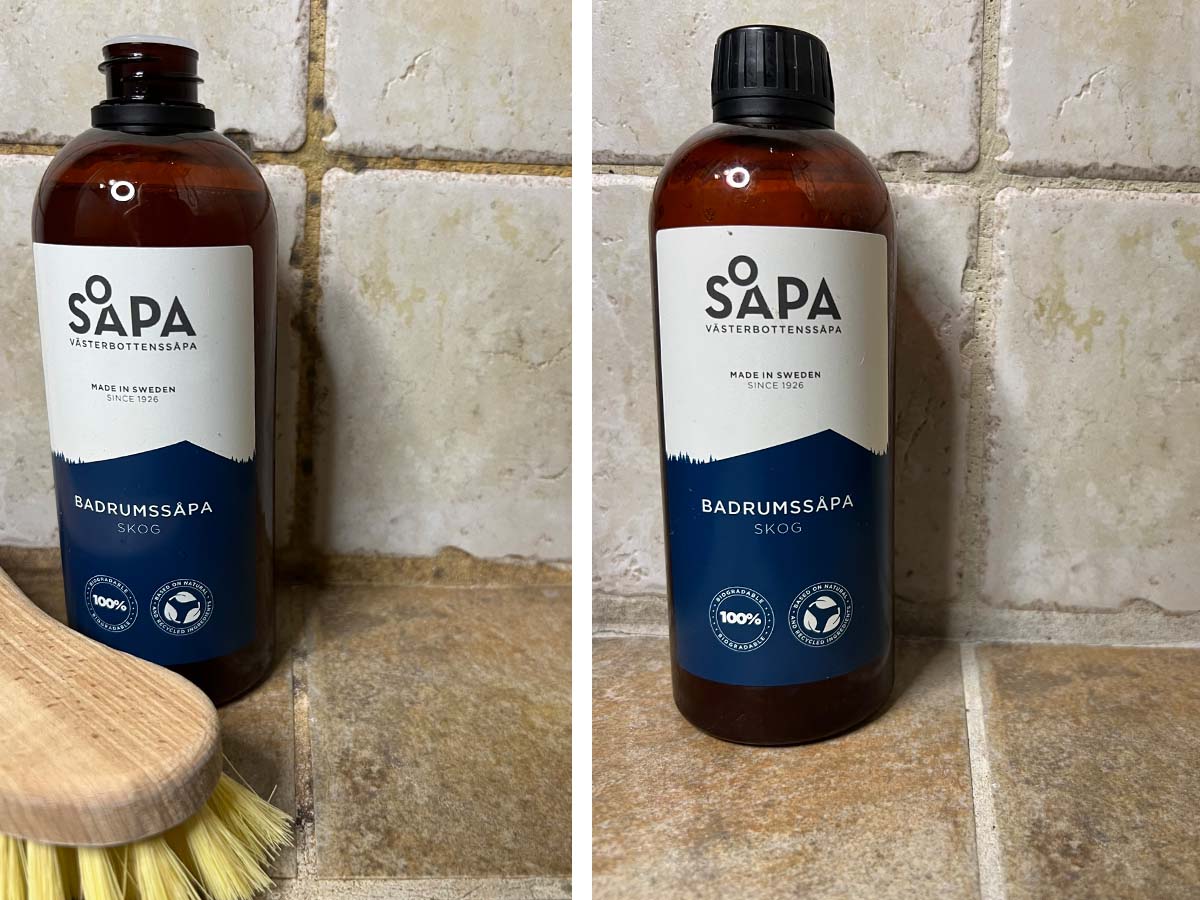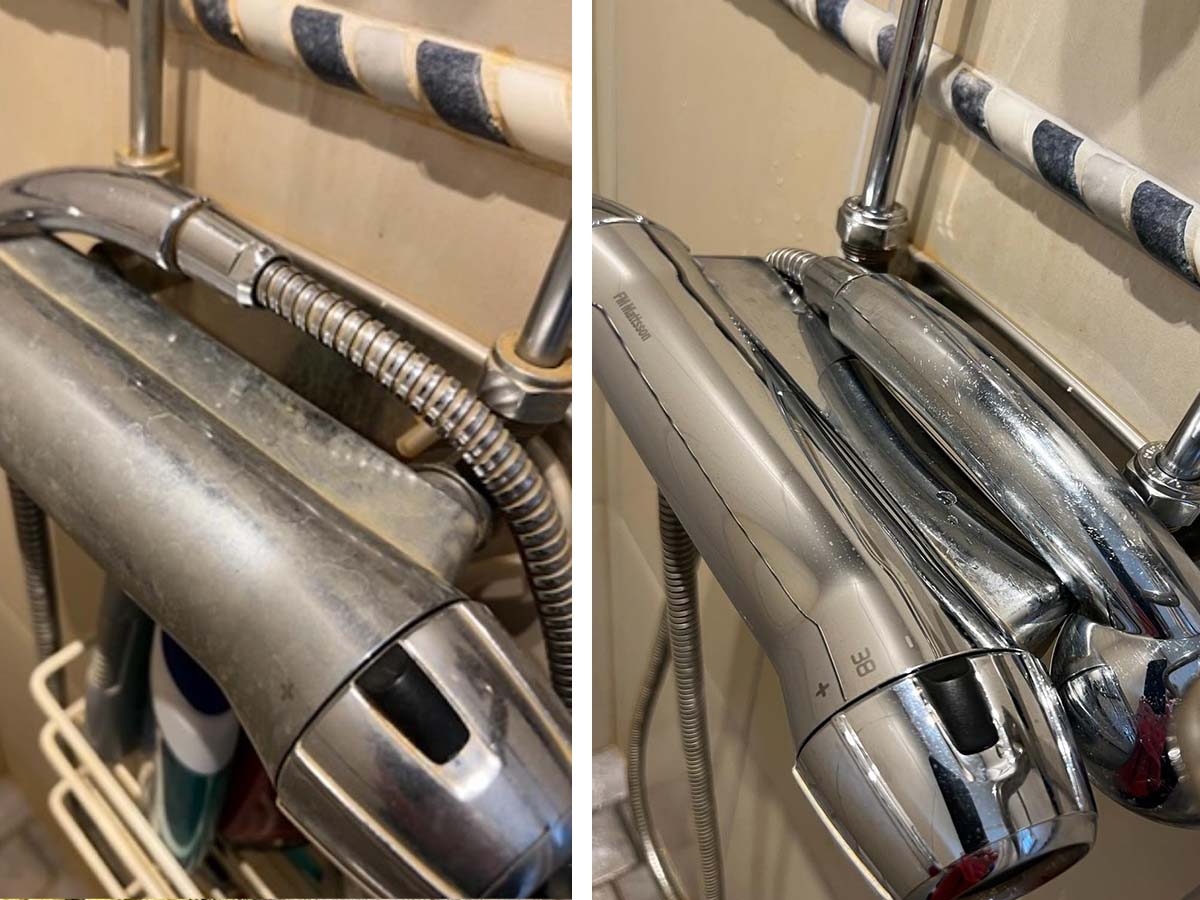In this post, we explore how to effectively and safely clean the bathroom without having to use harsh chemicals. We discuss the importance of using the right tools and methods to keep tiles, clinkers and joints clean and free from fungi and limescale. We also present step-by-step instructions to achieve sparkling clean results with the help of soap and vinegar. Finally, we share some tips to avoid the spread of microbes in the home by using separate cleaning tools for the bathroom and kitchen.
_
A clean and limescale-free bathroom is of course wonderful, but it's not always easy to achieve. But with the right things and a few tips and tricks, it's a breeze and no harsh chemicals or brutal methods are needed. Soap and brush and a little vinegar work well.
Tile and clinkers need to be cleaned a little more thoroughly from time to time than just "spray on and wipe off"; limescale, soap residue, skin debris and various fungi that can actually start to grow there settle in the joints.
It is common for the bathroom to be visited by, fusarium, which is a fungus that usually appears as a slimy red or pink coating in joints, seams or near the floor drain. It thrives in a humid and slightly acidic environment, so alkaline soap is a good choice to keep it away.
This needs to be scrubbed off, and soap works excellently for this. There are "advices" not to use soap or that it would not be possible to use soap on tiles/clinkers and joints, but I would argue that is wrong. Soap is a kind of soap, they are very "close relatives" and no one has ever heard of building a bathroom where you can't use soap?!
I dare say that the whole point of having a bathroom is that you should use soap there!
If there is still any doubt, I can reassure you with these pictures of our old bathroom. There are tiles on the walls and clinkers on the floor, even in the shower and the joint is light gray. This bathroom has been soaped for 24 years and it is still quite nice ;)
Here I have deliberately refrained from scrubbing for a while to be able to show in pictures and film how it looks and how it works.

Here you can see before soap scrubbing on the left and after on the right. A soft brush and bathroom soap is what has been used here.
Step by step
1. Scrub the joints and tiles with bathroom soap in a bottle, liquid, scrub brush and a little warm/lukewarm water. Rinse off. The tiles are not slippery at all if you rinse them off, but if you leave the product on the surface, you risk it becoming slippery. It becomes slippery almost regardless of which product is left on the surface.
2. I clean other surfaces with a scouring sponge and soap to be sure that everything that isn't limescale is gone. When that is done, it is clearly visible if there is limescale that has settled on the surface.
3. If there is, (it is common on shower walls and faucets) you just take vinegar on a sponge or cloth. Do not spray vinegar, it can irritate the airways. Be very careful if you use a strong vinegar solution or vinegar in a glass bottle. It is very easy to break glass bottles when cleaning and injure yourself or crack the bathroom porcelain. Vinegar should be kept far from children and animals and not be ingested.
I use Västerbottenssåpa's vinegar in a plastic bottle, which is 15% and suitable for cleaning. I take it directly on a sponge or cloth and wipe. If there are a lot and old limescale deposits, the vinegar may need to sit on the surface for a while.
We have put together a package with everything you need to clean the bathroom. You can find the package here.

4. For other surfaces in the bathroom, it is usually enough to spray with bathroom soap and wipe. Remember to use a special cloth for the toilet, it should not be used anywhere else. If the toilet seat can be removed, I always do it. I place it over the floor drain in the shower and soap it too. The fasteners for the seat are especially easiest to clean this way. Rinse off and put back.
- TIP: Places you often forget are the underside of the toilet tank and the base of the toilet.
5. Polish mirrors and faucets and you're done ;)
- TIP: The spread of microbes in the home is a common cause of illness and not something you want to experience. A simple and good way to avoid this is to simply have separate cloths, bottles and brushes for the bathroom and kitchen. This way you never risk spreading microbes between rooms.
(Microbes can be anything from parasites such as pinworms to viruses and bacteria)
____________________________________________________________________________
Questions and Answers
Why is alkaline soap a good choice to keep fungi away from bathroom joints?
Alkaline soap is a good choice because fungi thrive in humid and acidic environments, and alkaline soap creates an inhospitable environment for fungal growth.
Which tool and product is recommended to clean tiles and clinkers in the bathroom?
To clean tiles and clinkers, a scrub brush and bathroom soap are recommended, which effectively removes dirt and keeps the surface clean.
Why is it important to use separate cleaning tools for the bathroom and kitchen?
It is important to avoid the spread of microbes between rooms to prevent illness. Using separate cloths, bottles and brushes reduces the risk of microbes being transferred from one surface to another.
Clean the whole bathroom with Västerbottenssåpa's Clean & Limescale-free Bathroom Kit
